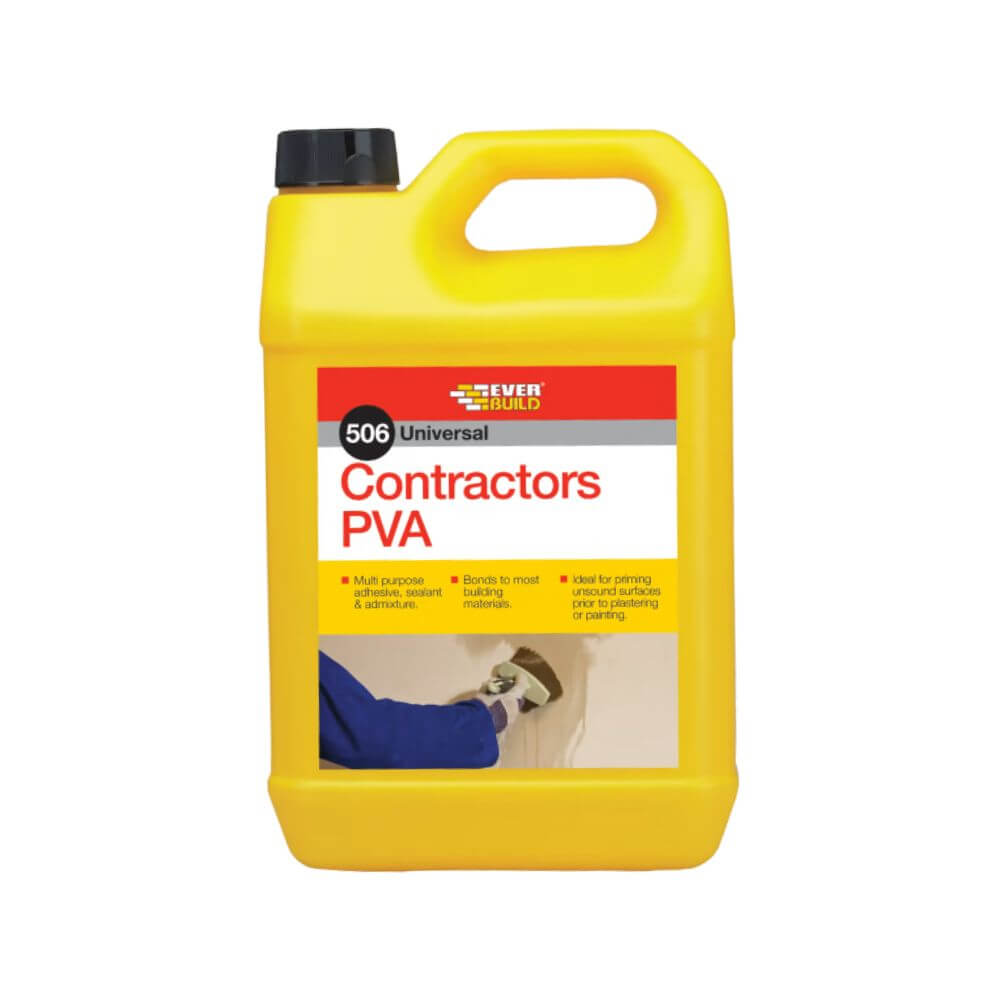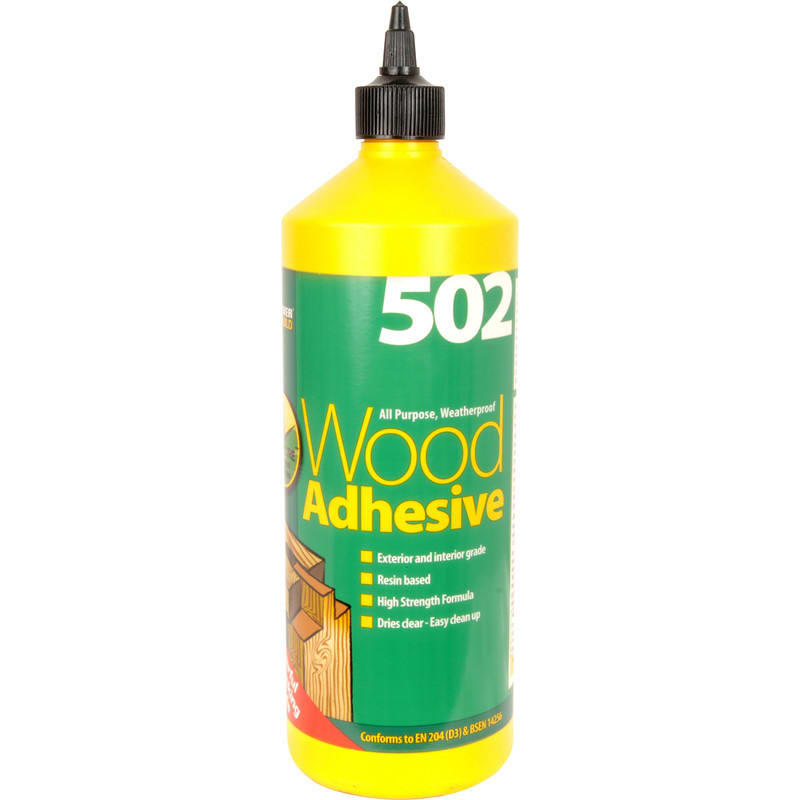PVA Glue
(4 Products)Polyvinyl Acetate (PVA) glue is one of the most widely recognised and versatile adhesives available, a staple in homes, schools, workshops, and even on construction sites across the UK. From simple children's crafts and DIY wood projects to specific building applications like priming and admixture work, PVA glue offers an easy-to-use, effective, and generally non-toxic bonding solution for a multitude of porous materials like paper, fabric and wood.
What Is PVA Glue?
PVA glue, commonly known as white glue, school glue, or wood glue, is a versatile liquid adhesive used for many everyday tasks and projects.
This water-based product, typically appears as a milky-white liquid and is made from a synthetic polymer. PVA glue works exceptionally well on porous materials like wood, paper, card, and fabric.
The bonding process is straightforward: when applied, the water content in the glue either evaporates into the air or is absorbed by the materials it's connecting. This allows the adhesive particles within the glue to draw together and fuse, forming a strong, durable film that bonds the surfaces. Most PVA glues dry to a clear or translucent finish, making them ideal for a neat appearance.
Compatible Materials
- Wood
- Paper
- Brick
- Plaster
- Ceramic Tiles
- Carpet
- Cardboard
- Cloth
- Leather
- Similar Porous Substrates
Benefits
- Ease of Use: Ready to use from the bottle/tub, applies easily with a brush, spreader, or directly from the nozzle.
- Water Clean-up: When wet, tools and spills can be cleaned easily with water, making it very user-friendly.
- Generally Non-Toxic: Most standard white PVAs are non-toxic, solvent-free, and low-odour, making them safe for use by children and in less ventilated areas. (Always check specific product MSDS).
- Dries Relatively Clear: Most formulations dry to a translucent or clear film, minimising visible glue lines.
- Good Strength on Porous Materials: Forms strong, durable bonds on wood, paper, card, fabric, and other absorbent materials.
- Versatility: Can be used as an adhesive, a surface sealer/primer when diluted, or as an admixture in certain building applications.
- Affordable & Widely Available: Generally one of the most economical and readily available adhesives.
- Paintable: Once fully cured, PVA glue lines can usually be painted over.
- Flexible Bond: The cured film often retains some flexibility, which can be advantageous for materials that might experience minor movement.
Important Considerations
- Not for All Surfaces: Standard PVA is not effective on non-porous surfaces like plastics (e.g., polyethylene, polypropylene), metals, glass, or rubber, as it cannot penetrate to form a mechanical bond and its adhesion is poor. Specialised primers or different adhesive types are needed for these.
- Water Resistance: Standard PVA glues have poor water resistance and will weaken or fail if exposed to moisture or prolonged high humidity. Always choose a D3 or D4 rated PVA if water resistance is required.
- Gap-Filling: PVA has limited gap-filling capabilities. For strong bonds, especially in woodworking, joints need to be close-fitting.
- Setting Time: PVA can be relatively slow to set compared to some other adhesives, particularly in cold or damp conditions, or on less porous materials.
.
How to Apply PVA on Wood
- Preparation: Ensure that the wooden surfaces you intend to bond are clean and free from dust or debris.
- Application: Gently squeeze out the PVA glue onto the two wooden parts you're aiming to join.
- Clean Up: Should there be any spills or excessive glue, promptly wipe it away using a damp cloth. This ensures a neat finish and avoids any hard-to-remove dried residue.
- Spread Evenly: Using a specialised plastic spreader or even a regular brush, distribute a uniform, thin layer of the glue on both wooden surfaces.
- Joining: Press the two wood pieces together. As you do, move them slightly side-to-side. This technique not only ensures the glue covers every bit but also eliminates any trapped air, which can weaken the bond.
- Secure with Clamps: Once aligned perfectly, use G-clamps to hold the wood pieces in place securely. Ensure the clamps apply even pressure without warping the wood.
- Patience is Key: Allow the PVA glue to set. It's recommended to leave it undisturbed for at least 24 hours to achieve optimal bonding strength.
- Final Touch: Once dried and set, if you notice any glue residues on the surface, use sandpaper to gently sand it away, leaving a smooth, clean finish.
Storage & Shelf Life
- Store PVA glue in a cool, dry place, in its original airtight container.
- Protect from frost - freezing can damage the emulsion and render the glue unusable.
- Typical shelf life is around 12-24 months if stored correctly, but always check the manufacturer's date and recommendations.
Frequently Asked PVA Glue Questions
What Is The Difference Between PVA Glue & Regular Glue?
If you're looking for a glue that will create an enduring bond, PVA is the adhesive you need. Unlike other glues which become brittle and crack over time, PVA dries quickly but maintains its flexibility even after it has dried - so your bonds won't be weakened by age.
What Is Washable PVA Glue?
Thanks to its formulation, washable PVA solution is incredibly simple to rinse off from clothes, brushes, work surfaces and even hair after it has dried.
How Does PVA Set?
PVAs owe their remarkable bonding strength to their polyvinyl acetate construction, a rubber polymer that produces the desired bond when dried.
On wooden surfaces and other porous materials, this glue penetrates deep into the material's fibres to create a strong hold as it dries.
How To Thin PVA Glue?
By adding a small amount of water to PVA, you can create the perfect consistency for your project. Make sure that you are stirring thoroughly as you go to avoid diluting it too much - add the water directly into your glue and not vice versa!
With this method, you’ll be able to transform any gloopy mixture into an easy-to-use adhesive.
Can I Use PVA As Wood Glue?
Yes, PVA can be used as a cost-efficient and eco-friendly solution to securely bond wood pieces together. Not only is it inexpensive but it is also free of toxic substances.




